PREVENTING INJURIES WITH THE GLUTE-HAMPractical tips on how to keep you from becoming hamstrung from a hamstring injuryBy Kim Goss Published: Winter 2002 Time is a critical factor in a young athlete's life. Two hours of daily practice, busy competition schedules, and weight training workouts are now the rule rather than the exception. Then there is school, perhaps a part-time job, and of course lots of time going to practice, games, school and jobs -- and did we mention a social life? With such a full plate of student activities, a coach has to make the most of their athletes' time in the weight room by selecting only the most effective exercises -- exercises that will not only improve performance but also help avoid common injuries. One that is especially frustrating to see happen is any injury to the hamstrings, frustrating not solely because these injuries can easily end an athlete's season but also because they are almost entirely avoidable. The foremost expert in preventing and treating hamstring injuries in the nation today is Dr. Michael Ripley. Since 1996 Dr. Ripley has been working with many of the best track and field athletes in the world, and at the Olympics in Australia he saw 10 of his sprinters win medals. Further, several of these athletes had been treated at one time or another by Dr. Ripley for hamstring injuries. When asked why the hamstrings are so susceptible to pulls, Ripley replied, “First, athletes and coaches in America often don't recognize the importance of emphasizing core exercises that work the hamstrings, such as power cleans, and more specific auxiliary exercises that also work the hamstrings, such as the glute-ham raise. Instead they prefer to concentrate on leg curls, which are good exercises, but are not as effective as these other hamstring movements because they work only the lower aspect of the hamstrings.” In addition to following improper or inadequate strength training guidelines, Ripley has found that athletes often neglect stretching exercises. Ripley says that after training, muscles often develop a higher level of tension than before the training. “This tension will cause muscles to shorten, and without post-stretching I've found that over time this causes shortening of the athlete's range of motion. In my opinion it's most important to stretch immediately after the workout because you help keep the body symmetrical. In contrast, if you waited several hours you have to stretch for a considerably longer amount of time to achieve the same effects.” Another factor is related to lifestyle and coaching methods that overly tax the athletes. “Too many coaches try to copy the programs of professional athletes or elite European athletes. These athletes usually have access to excellent recovery methods, such as soft tissue work and various forms of restorative therapies such as electrostimulation. Just being a kid going to school and walking on concrete all day fatigues the hamstrings, and when you add that stress to the overly-long sport practices, you're asking for trouble.” Finally, Ripley suggests that strength coaches must learn the proper technique for individual exercises to avoid developing postural problems that could contribute to hamstring injuries. In fact, one study on hamstring injuries showed that one of the most important causes of hamstring injuries was improper hip alignment. Emphasizing proper form in all exercises is one way to help prevent these postural problems from occurring. Working on the Chain Gang This concept of working “chains” of muscles is in contrast to the training of bodybuilders, which generally involves performing many isolation-type movements, such as curls for the biceps. Although isolation exercises are important to bodybuilders and are often used in the early stages of rehabilitation, these exercises subject the muscles and other soft tissues to high levels of stress. In fact, Nancy Kerrigan's physical therapist literally threw his expensive leg extension machine in a dumpster because he found it was often doing more harm than good! The workouts in the BFS program consist primarily of what strength coaches often call “economical exercises,” which are exercises that involve multiple muscle groups. The bench press is an example of an economical exercise because it involves the pectorals, shoulders and triceps. For the lower body, one of the best exercises that work the hamstrings is the glute-ham raise. The glute-ham raise begins as a standard back extension, the difference being that after the lower back becomes parallel to the floor, the athlete continues the movement by bending the knees. This additional movement involves the knee extension (bending) function of the hamstrings, whereas the first part of the exercise primarily works the hip extension function of the hamstrings. To perform this exercise comfortably, the machines used for this purpose have a rounded pad. One person who helped popularized the glute-ham exercise was Bud Charniga, a weightlifter who in 1974 snatched 352 pounds, only five pounds off the American record in his bodyweight division. Charniga developed a homemade version of the glute-ham machine after reading an article in a 1971 issue of Strength and Health. Eight years later when he visited Russia, he found that every gym he visited had a glute-ham station, and that the exercise was an integral part of the training of Russian weightlifters. Charniga's glute-ham bench consisted of a padded car seat nailed to a carpenter's bench. He placed the bench in front of his power rack, and hooked his legs underneath a barbell so he wouldn't tip over. BFS has refined this design, and recently introduced the roller glute-ham, an adjustable machine that offers the benefit of a round pad that rotates as the athlete moves. The window of opportunity an athlete has to achieve optimal performance is all too brief, and it's a shame to see athletes shorten that time even more by suffering from hamstring injuries. Make sure you don't hamstring yourself by overtraining. Instead, work out smart with core exercises, post-stretching and proper technique. |
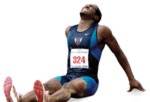 |
|
|
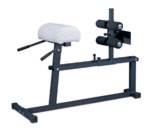 |
|
The Glute Ham Developer |
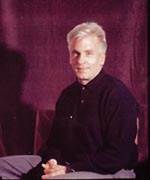 |
|
Dr. Michael Ripley |
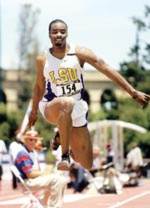 |
|
Walter Davis recovered a pulled hamstring. |
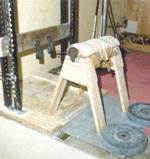 |
|
Bud Charniga's glute-ham bench consisted of a padded car seat nailed to a carpenters bench. |
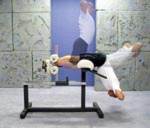 |
|
The BFS 3" x 3", 11 guage steel tube, Super Glute has come a long way since Bud's carpenter's concept unit |
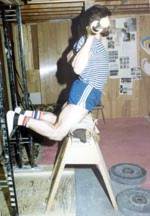 |
|
Bud Charniga |